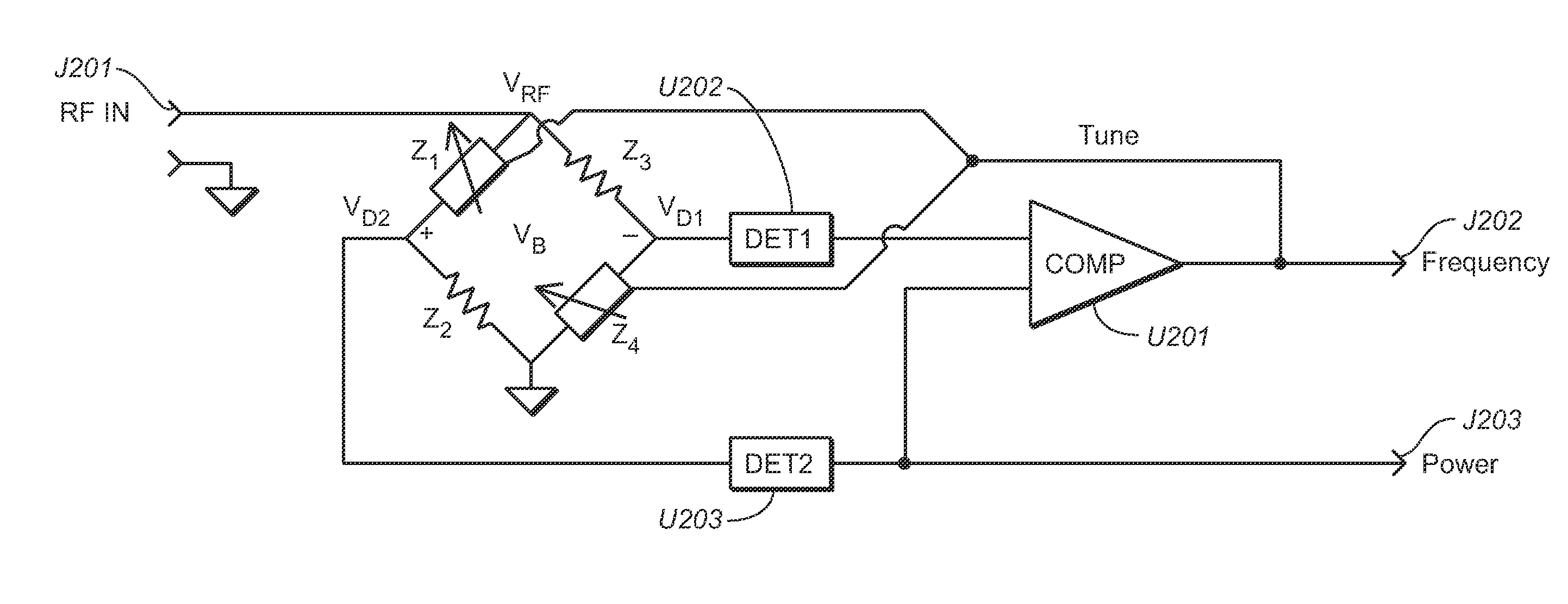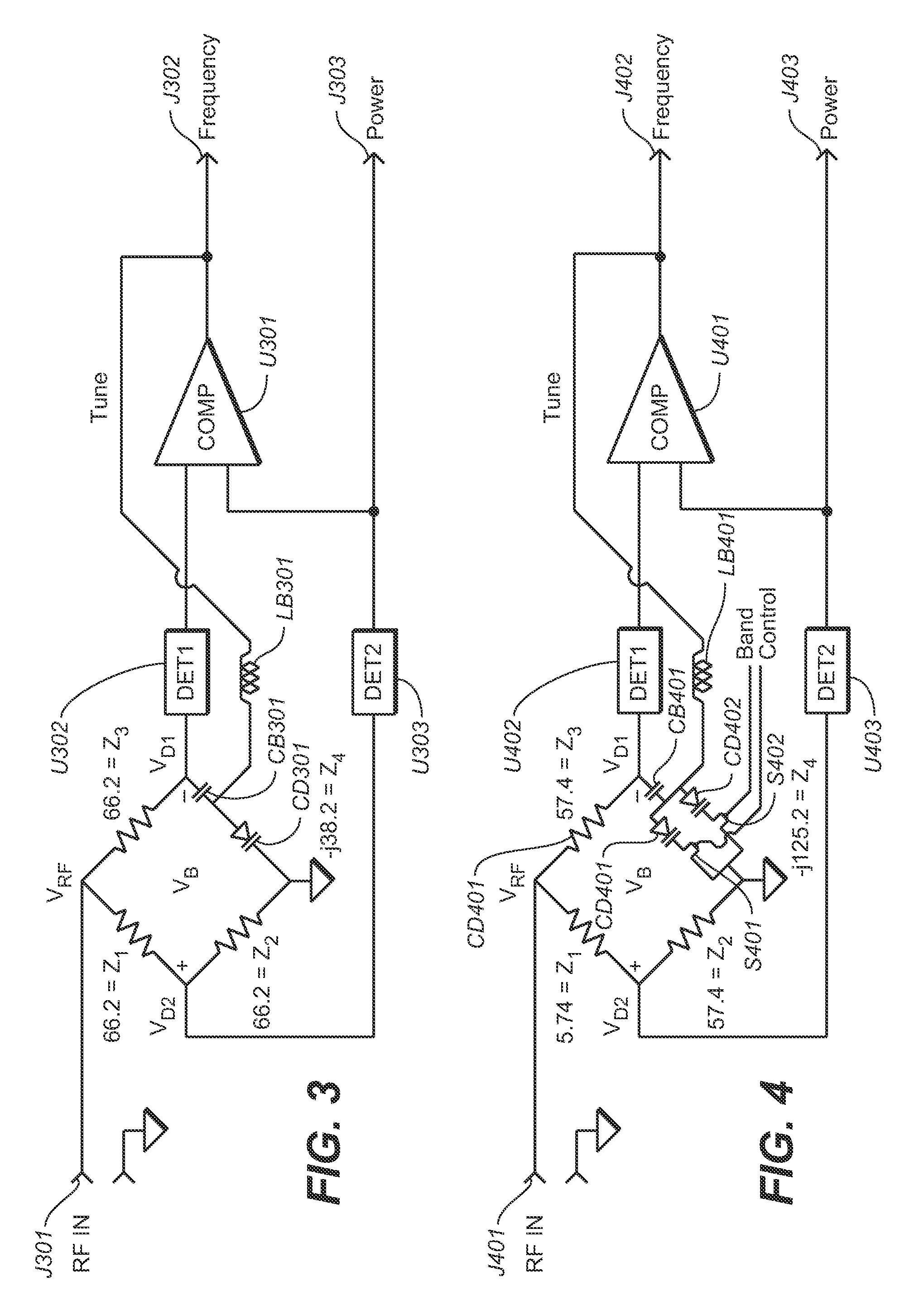Self-balancing frequency determining bridge
a frequency determining bridge and self-balancing technology, applied in the direction of reference comparison, resistance/reactance/impedence, instruments, etc., can solve the problems of slowness, complex and expensive, and inability to automatically apply calibration factors as a result of measuring frequency, etc., to achieve good frequency range, good frequency insensitivity, and excellent match
- Summary
- Abstract
- Description
- Claims
- Application Information
AI Technical Summary
Benefits of technology
Problems solved by technology
Method used
Image
Examples
Embodiment Construction
[0047]Referring now to FIG. 1, there is shown a simplified schematic diagram of a first preferred embodiment of the present invention. In this embodiment, each side of a Wheatstone bridge provides impedance through voltage-controlled frequency-reactive elements Z2 and Z4, and non-reactive impedances Z1 and Z2 only, such as resistors. The junction of Z3 and Z4 are grounded in common with the ground used by RF input connection J101. A radio frequency (RF) input signal is applied to RF input connection J101. The RF input signal is passed from RF input connection J101 to the junction of Z1 and Z3
[0048]The junction of Z3 and Z4 is the input to detector U102, which then produces as its output a direct current (DC) voltage proportional to the power of the RF input signal. The output of detector U102 is coupled to one input of differential voltage comparator U101. Note that detector U102 is preferably implemented as a demodulating logarithmic amplifier, capable of accurately converting an ...
PUM
 Login to View More
Login to View More Abstract
Description
Claims
Application Information
 Login to View More
Login to View More - R&D
- Intellectual Property
- Life Sciences
- Materials
- Tech Scout
- Unparalleled Data Quality
- Higher Quality Content
- 60% Fewer Hallucinations
Browse by: Latest US Patents, China's latest patents, Technical Efficacy Thesaurus, Application Domain, Technology Topic, Popular Technical Reports.
© 2025 PatSnap. All rights reserved.Legal|Privacy policy|Modern Slavery Act Transparency Statement|Sitemap|About US| Contact US: help@patsnap.com



